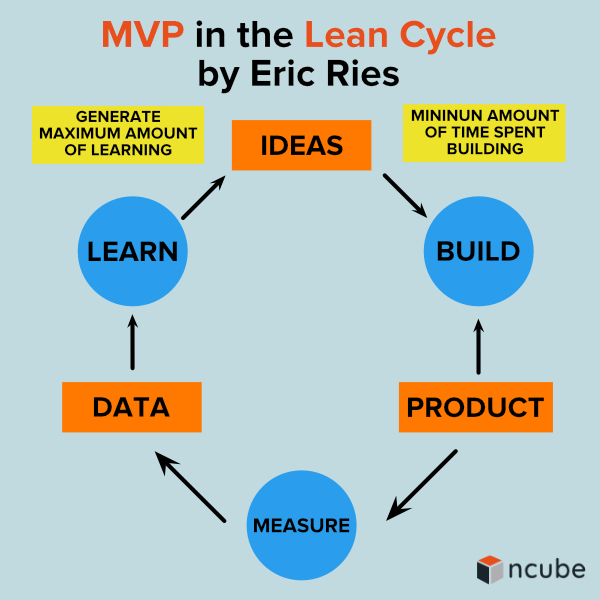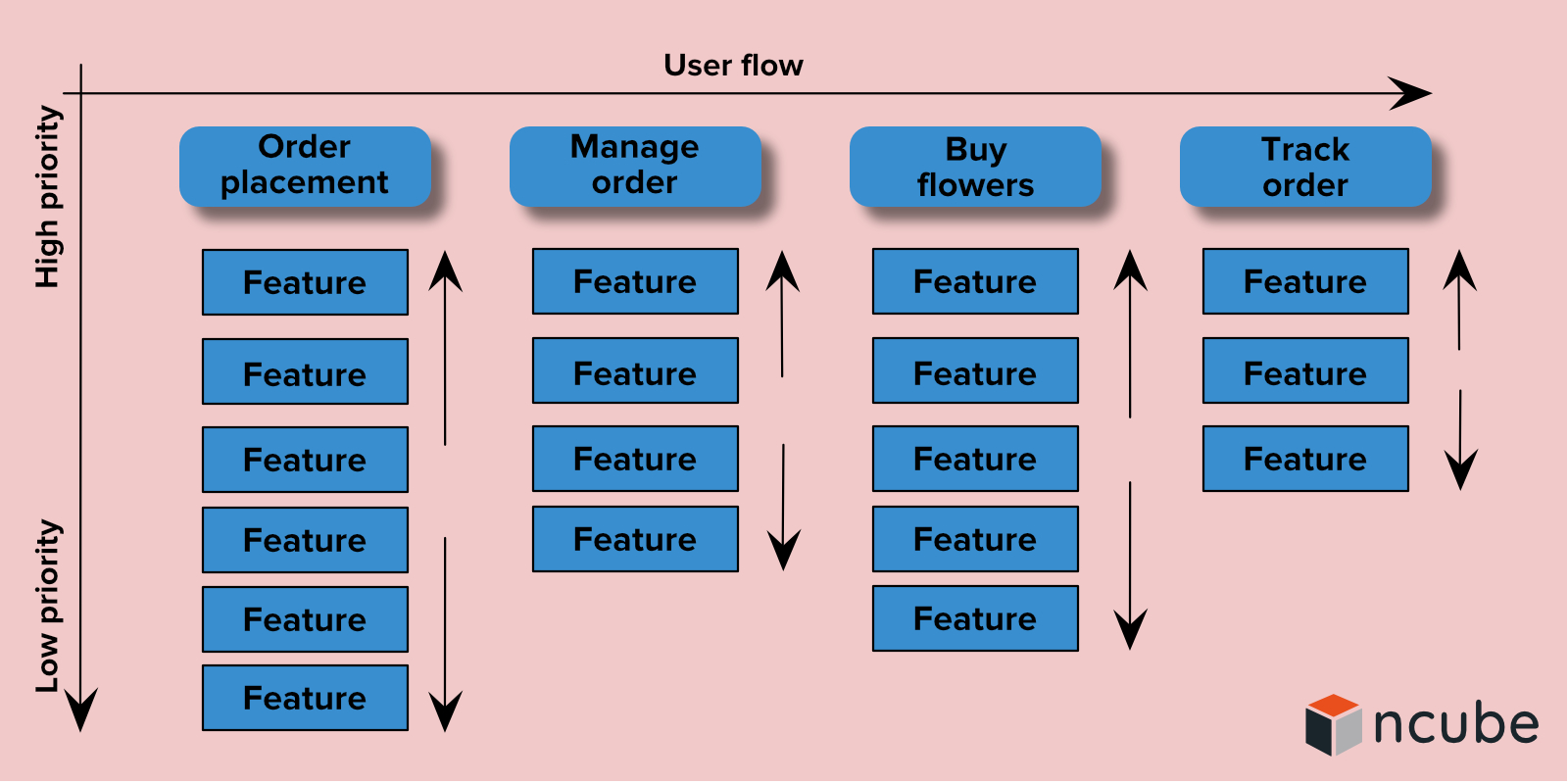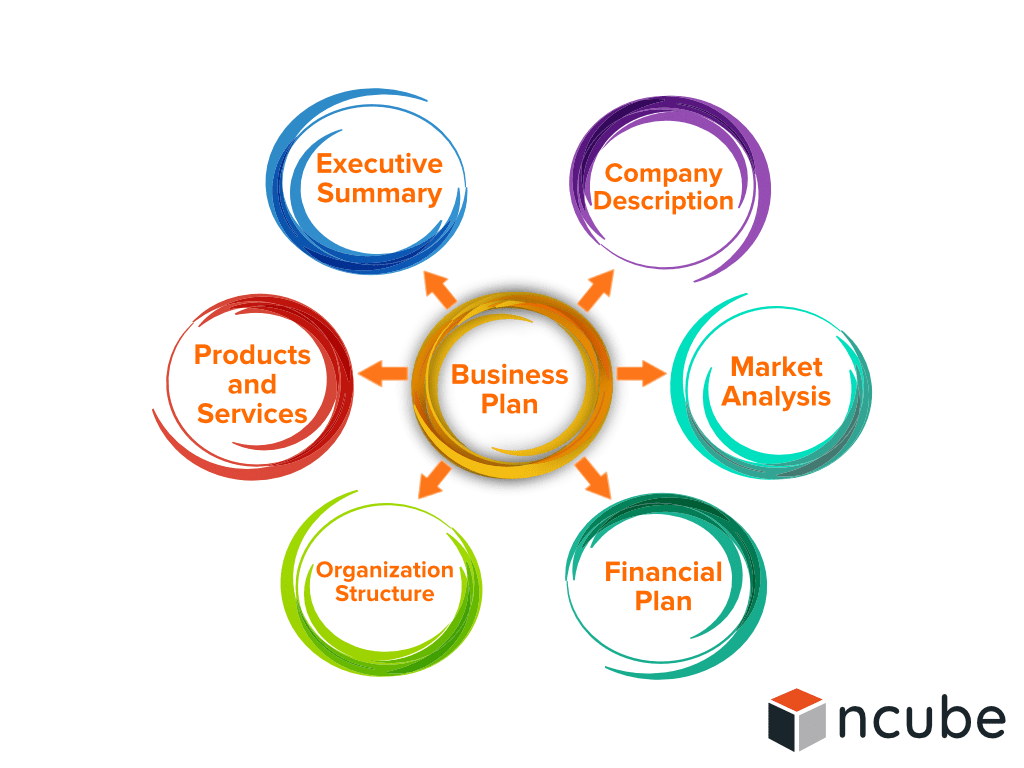It takes years to make a great software product loved by millions of people. Think Facebook, Instagram, Uber. None of these behemoths started out as full-fledged products. In fact, their initial versions were a far cry from the current ones. They have been developed into the products we know gradually, one feature at a time.
Have a great idea for a business but don’t know how to measure its potential? There are some proven ways. You may want to run this idea by someone who looks like your target audience. Create a landing page. Experiment with SEO and pay-per-click. Introduce your product on your Youtube blog. Build an actual software.
All of these are examples of Minimum Viable Product (MVP). Yes, it comes in many shapes and forms. But no matter what it looks like, an MVP aims to paint a picture of your product’s potential. So, if you are planning to build one, dive deeper into this topic.
What does MVP stand for?
Simply put, an MVP is a bare-bones version of your product built with the purpose of validating your idea. It includes the minimum number of features that address the main problem you are trying to solve. The “minimum” means getting it to the market quicker and the “viable” assumes the product needs to be a working one. The next versions of the valuable product will be developed basing on the feedback from users.
The term was popularized by Eric Ries in his book “The Lean Startup.”
MVP business meaning by Ries: “A Minimum Viable Product is that version of a new product which allows a team to collect the maximum amount of validated learning about customers with the least effort.

What are the benefits of an MVP? It lets you:
- Learn if there’s a market for your business idea;
- Collect valuable insights about the needs of a target audience for further product development;
- Gain an understanding of the product’s potential;
- Collect the feedback from first adopters;
- Start to build a base of loyal users;
- Attract investors.
What an MVP is not?
The nature of an MVP is often misunderstood. Many startups see an MVP as a way to save time and money. Lacking the knowledge about their target market, they strive to build a full-functioning product on a shoestring budget, only to hit rock bottom.

Above all, MVP software is a learning tool. It’s cost-effective because it contains only the necessary functionality and a sufficient number of features to test an idea.
That said, it’s better to avoid building an MVP to cut costs on development. Instead, MVP is an ideal tool to take your idea for a spin so you could understand whether it’s worth further investment.
Most importantly, an MVP doesn’t need to have a fancy design, but it needs to communicate value. It also needs to be intuitive and easy-to-understand. If a user finds it convoluted, they won’t be able to appreciate its value. In fact, creating a beautiful design to test an idea can be risky as it may distract the user from the value of your product.
Read also: How to Write a Startup Business Plan That Will Secure Investment
MVP product recipes: Key types
There are lots of approaches to building an MVP. Let’s have a look at the most common ones.
Wizard of Oz MVP
The name of this MVP type reflects its idea. Similar to the way the Wizard of Oz simulated an illusion of a scary green head by pulling the levers behind the scene, this type of MVP only gives an impression of a fully functioning system, In reality, all the tasks of an automated system are performed by a human.
This strategy was implemented by Nick Swinmurn, the founder of Zappos. In the early days, he didn’t spend a dime on shoe procurement or warehouse lease. He simply posted pictures of items on the website to test his assumption of people buying shoes online. Upon receiving an order, he would go to the store, buy a necessary item and ship it. After realizing that his idea was viable, he created a fully-functioning website.
Wizard of Oz MVP recipe:
- Put up a website;
- Take pictures of items you want to sell, write descriptions, pricing, etc;
- Receive orders and ship products manually.
Concierge MVP
Similar to the previous recipe, this one doesn’t involve an automated system. With the Concierge approach, you will need to walk a user through the concept of your product, providing a wow-effect service. This way you connect with users and learn how they respond to your product.
A good example of Concierge MVP is Food on the Table, a company that specializes in generating custom meal plans based on customers’ preferences. Manuel Ross, CTO of the company, used to approach potential customers in person, offering a monthly subscription to his service. He generated the recipes manually and accompanied customers while they shopped for groceries.
Concierge MVP recipe:
- Find potential customers and ask them about their food preferences;
- Create weekly meal plans;
- Deliver groceries for each client;
- Improve the service based on the feedback you receive from clients.
This approach is more theoretical than the Wizard of Oz. It’s geared towards idea generation and connection with the customer to learn about their needs and demands.
A piecemeal MVP
Startups turn to this approach when it’s possible to develop a product using only off-the-shelf tools and solutions. It’s is a cheap way to introduce an idea to the market, but it can be time-consuming to put together all the needed services to enable functionalities of your product.
Read also: How to Write a Startup Business Plan That Will Secure Investment
Groupon started as a piecemeal MVP. In the early days, it was a combination of a plain website and email – it’s been a long time before the service was automated and a mobile app appeared.
A piecemeal MVP recipe:
- Launch a blog where you post deals from local stores;
- Generate PDF files with deals;
- Email them to potential customers.
Other MVP recipes:
- Launch a plain website with pictures (Airbnb)
- Post and promote an explanatory video (Dropbox)
- Create a landing page (Buffer)
How to build a minimum viable product?
Step 1. Identify the problem
What problem your product is going to solve? An answer to this question will define the value of your product. The best way is to find an answer is through conducting interviews with potential customers and investigating your competitors.
Step 2. Define your target audience and narrow it down
Trying to satisfy the needs of a broad audience is a long shot. Targeting a specific audience, on the other hand, enhances your chances of success.
It’s recommended to create a detailed description of an ideal customer. Think of a real person, someone who will be ready to part with money for your product, and do so without hesitation. Things to include in your description:
- age;
- gender;
- profession;
- habits;
- hobbies and interests;
- technologies they use, etc.
This description will give you an idea of how your product fits in with their lifestyle. Let’s take Uber as a minimum viable product example. The company decided to target those who required a taxi on time:
- Tourists and business travelers;
- People who go to club, party, and events frequently;
- Travelers during the bad weather condition;
- Late-night travelers.
Uber clearly understood the problems of the users, which resulted in creating a disruptive service.
Step 3. Analyze competitors
You are probably not alone in the targeted niche, so it makes a lot of sense to get to know who you’re competing with. Think about it, the uniqueness of your product could be in addressing the drawbacks of the existing solutions.
- Analyze three major players in the market. What are their strengths and weaknesses? Can you provide a better solution?
- Describe their market share. Dive deep into their sales strategies, revenues, financial and marketing goals. It will help you understand how successful they are and learn from their experience.
- Use analytics software: Similar Web, Quantcast, App Annie, and AppFollow collect data about sites and applications of the rivals. These tools will shed light on how your competitors are doing in terms of popularity, monthly traffic, and what kind of audience they attract.
Step 4. Map out a user flow
It’s a story of a user trying to achieve their goal by using your product. When you imagine it, think of the concrete steps a user needs to take. Does the user have enough information to move on to the next step?
Let’s use a flower delivery app as an example of user flow. Typically, a user goes through these steps:
- order placement
- managing an order
- buying
- tracking order
- receiving order
Step 5. Make a list of MVP features and prioritize them
Now that you have mapped out the user flow, it’s time to list a set of features pertaining to each step. The creator of user story, Jeff Patton, believes that one feature should embody one action performed by a user.
We have outlined 5 steps a user needs to take to get flowers delivered. Now, make a list of functions for each step. For example, step one, placing an order, may contain the following core features:
- choose address
- filter options
- choose an item
- add an item to cart
Now prioritize the features by dividing them into high-priority and low-priority. The most used features will be at the top of your list. In the end, your MVP case will look like this:

The scope of MVP for your first iteration will include the high-priority features and ones without which the product cannot bring value.
Step 5. Develop your MVP
After you have defined the scope of MVP, time to roll up your sleeves for a laborious iterative process of development. Following the steps within Kanban or Scrum frameworks, you can improve the product as you go.
Read also: Software Development Life Cycle: A Guide to Phases and Models
Keep in mind that MVP needs testing throughout an entire development process. Alpha testing can be done by your in-house Quality Assurance experts. At the final stages, you will need to involve external resources for beta testing. Prior to rolling out to the market, make sure the final product functions properly so that your early adopters can see its value.
Wrapping up
For most startups, the biggest question (and risk) is the existence of the market they want to target. For the founders of Dropbox is was: “Would people want to sync files?” At Zappos, the founder pondered over: “Would people buy shoes online?” With Airbnb, the question was, “Would anyone want to live in a stranger’s home?” In all cases, startups turned to the MVP concept to find an answer.
We at NCube are proponents of validating ideas with MVP. If you need help with your MVP project, we can engage experts to work on the technology side of your solution. We abide by the IP protection regulations and sign an NDA before any information is disclosed. Let’s connect?
Chief technology officer is a complex role that lies at the intersection of business and technology. A CTO is usually seen as a seasoned professional with a combined knowledge of a solutions architect, programmer, DevOps, team leader, and domain expert. The truth is that in a startup environment, the CTO often wears several hats. He or she is obliged to pick up the slack when there’s no opportunity to hire dedicated specialists.
Knowing the nature of this position allows to shape an ideal portrait of a candidate to support you in your product creation journey. Let’s start!
Technologies within business: A CTO’s areas of focus
It’s important to understand the goal of this position within an organization is to ensure the technology strategy is aligned with business needs. Usually, a CTO plays a significant role in the following elements of business:
- Technology innovation
- Business transformation
- Leadership and management
- IT operations
- IT transformation
- Optimization of IT infrastructure
- Business operations
Explained: What is a CTO?
A “T” in the abbreviation stands for technology, but what does this role actually entail? The description varies from company to company. Depending on the type of business and industry, company size, there’s a need to engage different persona types.
We are basing our description of CTO personas on Russel Raynolds “Inside the Mind of the Chief Technology Officer” and Gartner’s “Understanding the 4 Common CTO Personas.”
Chief business-led technologies director
Retail, technologies, media, telecommunication, banking
Goal: to apply technologies to the main business functions, foster digital transformation.
A position in the C-suite of a company overseeing several business and technology departments. This role is authoritative and especially relevant in our digitalized world. A person in this role is expected to build rapport with other executives to stay efficient handling the broad scope of responsibilities.
Business Enabler
Tech product companies, tech startups
Goal: Operational management
When an organization creates a tech product, this persona type stands at the helm of that product. This position is about ensuring that the product functions properly and stays relevant to the current market trends. In this case, a CTO manages a product engineering team and is responsible for operational technology.
The Innovator
CIO vs CTO collaboration
Goal: to leverage disruptive technology, discover a new business model
As a technology visionary, this type focuses on leading the architects, innovation managers, and general IT specialists. As usual, this person is an executive, serving as a central point of IT innovations within an organization and often the right hand of a CIO.
Chief operating officer
Sizeable organizations
Goal: to drive the day-to-day IT operations
In this case, the main responsibility of the CTO is to ensure IT services delivery that supports the business model is in place. This role aims to free up the CIO so that they can work at a strategic level of business.
Regardless of their persona type, A CTO is on an important mission: ensuring that the organization’s technology fully serves its business strategy. Whether they work for an established organization or a startup, this remains essential for this role.
What types of CTO can be found in startups?
When it comes to technology startups, there are three types of CTO.
Technical Lead (lead developer). The scope of responsibilities lies in the realm of solution architecture, team leadership, and software development. This type has a lot in common with a senior-level software engineer, who has experience in leading an engineering team.
Operational Lead (ex-project manager). This role focuses more on the business side of technology implementation, leaving the daily development tasks to programmers. Operational Leads are strong managers who set up a strategy and orchestrate the engineering effort within an organization.
Product owner. This often goes unnoticed, but a product owner can actually play the role of chief technology. Product owners know the ins and outs of the product, as well as the market and users and can turn this knowledge into a business benefit. Instead of managing, he or she guides an engineering team. Bottom line is that a product owner has a vision and excels at communicating it to the team members.
Main responsibilities of CTO in startup

A startup CTO drives the day-to-day development process. This distinguishes the startup CTO from their corporate counterparts, who aren’t involved in purely programming tasks.
- Shaping technology vision
After analyzing business goals, the CTO develops a technical strategy for the company. This step requires collaboration with co-founders in order to align the strategy with the business vision. To shape the vision, the CTO needs to combine the best of two worlds: technical skills and business acumen.
- Building an MVP
The CTO is responsible for creating an MVP that can be to gain real-time user feedback as fast as possible. If one of the startup founders is a techie, they usually take on the role of a CTO. Otherwise, there’s a need to hire a dedicated specialist. This person will be responsible for a series of product iterations and they are accountable for the quality of the final product.
- Quality Assurance
A dedicated Quality Assurance team is a rare sight in startups, especially at early stages. Testing is usually dispersed between team members, and it’s a CTO who needs to come up with the testing system. Besides, the CTO is probably the only person who knows an architecture well enough to test it meticulously.
- Attracting and mentoring talented developers
The CTO handles interviewing, hiring, onboarding and training of engineers. Here having a strong network will be of help. They mentor tech talent who can be later trusted with critical functions, and they need to have the engineering expertise to evaluate technical knowledge.
- Tech stack
Basing on technical and commercial properties, the CTO suggests likely technical platforms to use on the project. The solution requires such considerations as the number of developers available, the cost of developers, the cost of the framework, deployment time, security, community support, and fitting for business vision.
- Updating architecture
In the early stages, the app’s architecture rests on the shoulders of the CTO. After creating the first versions of a product, there might be a point when an update of architecture is sorely needed. That said, CTO needs to handle the improvement process personally or hand this task over to a senior engineer.
- DevOps
Startups usually do without a DevOps specialist. In this case, a CTO steps into the shoes as a DevOps until they can hire a dedicated resource. In this role, the CTO manages domains and SSL certificates, sets up servers, databases, third-party tools, and ensures company-wide security.
What qualities does a CTO need to possess?
Thinking outside the box. This makes sense because technologies are constantly evolving, so the CTO must excel at finding new and better solutions and see how the company will evolve in the long run.
Challenging the conventional wisdom. CTOs are able to rattle the status quo, take leadership, and see beyond traditional approaches.
Moving decisively towards business goals. Results-driven by nature, a CTO is a flawless executor with an entrepreneurial spirit.
Flexibility. Although a CTO may have some kind of technology “hunch,” the future may unfold in an unpredictable way. Developing an adjustable approach to any situation is one of the things that make a great CTO.
CTO skills that guarantee to fare well in a startup

Technical knowledge
CTO is a key decision-maker who chooses the tech stack, programming language, and framework. Ideally, a candidate needs to have 10+ years of experience in the IT field. They need to know the ins and outs of the software development life cycle and are experienced to incorporate strategies to accelerate time-to-market.
Technical leadership
A CTO needs to be able to provide leadership for the technical strategy in order to accomplish the goals of an organization.
Communication skills
The ability to communicate the technology strategy to the engineering team, investors, and key stakeholders is important for this role.
Strategic planning of technological resources
A CTO is expected to research and create strategies, improve an IT infrastructure and finetune an engineering team efforts to align with business priorities
Project management
An essential part of the CTO position – overseeing the flow of work, design stable processes using best practices and methodologies.
Operational excellence
CTOs optimize operations by enabling agility, security, and reliance within ecosystems. The operating model developed by CTO is needed to bridge business and technology strategy.
Sense of entrepreneurship
This role is critically important for delivering a competitive advantage by choosing the right technology that will engage customers.
Mentorship and coaching
CTOs foster corporate culture by inspiring an engineering team to grow and develop. They should be actively involved in feedback and retention of team members.
Future anticipation
As an avid learner, a CTO continually researches trends in the IT industry, including innovative technologies and advises on the impacts of this technology in the long run.
In summary
Startups hire CTOs to handle technology challenges during the software development life cycle. A chief technology officer job and goal is to foster the alignment between business goals with technology solutions.
Hiring a CTO on-site can be a laborious process, let alone the sky-high cost for such an expert. The CTO salary in the United States is around $160K per year.
There’s always an option to outsource CTO-related responsibilities to our team at NCube. We can provide senior software developers, tech leads, and DevOps specialists who could step in as your remote tech partners. Let’s talk?
You have a great idea. You are excited to breathe life into it. But where to start? Should you rent an office? Seek advice from consultants? Set up an LLC? You will do all of that, but later. First, you need to take time and write a business plan.
Whether it’s to secure a loan or investment or set the direction of your business, planning is essential.
A startup business plan is a document that shows where your business stands now and where it’s going. It keeps you on track, organized and focused.
Why is it important? According to the statistics, new businesses tend to go down in the course of five years. But it has also been proven that having a formal plan in place increases a venture’s chances of success up to 50%. Having a business plan for startups is absolutely necessary if you are going to secure a loan or acquire investment capital.

Take a look at a quick business plan overview. It has the following core sections:
- Executive summary – overview of your business
- Company description – your activities
- Products and services – products and services you sell
- Market analysis – investigation on your target audience, marketing, and competitors
- Organization and management team – your company structure
- Financial plan and projections – financial information, income projections
Why should you take your time to create a business plan? Because not only it will help you set your venture off to a good start by attracting investments, but it will also be your guide to sustainable growth in the future.
If you have a startup on the anvil but haven’t come across a good startup business plan template, this article will help you write one from scratch.
1. Write an Executive Summary
Goal: to create an emotional connection in order to get the investor to read your business plan or meet with you.
An executive summary is a preface of your business plan. It sums up your business plan in a concise document presented to investors, potential partners or when seeking loans or startup funding.
Given its significance, your executive summary can make or break your entire business plan.
While it should summarize the main points of an entire report, it also should be interesting enough. An ideal executive summary is short and written in an accurate and concise language.
The executive summary for a business plan should include:
- Business name, location
- Products and/or services offered
- Mission and vision, objective
Tips for writing an executive summary
There is no set template for an executive summary, but there are some guidelines to ensure your summary will draw the attention of investors.
- Define your main objective. When doing it, avoid ambiguity like saying “we are going to sell products online.” This statement won’t help investors understand your business better. Instead, tell about your products and services, and how they can help solve customers’ problems. Show that you care and explain why the world must see your product.
- Keep it real. Be sure the keep the balance of a sales pitch and your aspirations with realism in order to be convincing.
- Identify your unique value proposition. It’s important to explain what your company does, but it’s more important to cover the benefits you’ll bring to the clients as well as how your company stands out from the competition.
- Consider the tone of your executive summary. Make sure it is matched to the investor’s background. If you present it to different groups of people, you might want to tailor it to each audience.
- Keep in mind, an executive summary is exactly what it says on the tin, meaning it’s an overview. So it makes sense to write it after you have written a full business plan. Also, keep it short – no more than 5-10% in length of the whole document will do.
2. Draw up a company description
Write a general description of your startup
This section of a business plan briefly describes your company. Writing it will help you shape your business vision and draw the reader’s attention to key points of your business plan.
Type of business
Describe what your organization is going to produce or sell. Specify whether you are a service, merchandising, manufacturing, or another kind of business.
Location
Write a few words about your company’s location, including physical address and information about the area. Include information on the square footage of your office space you will occupy. Specify whether the place will be purchased or rented.
Management and employees
Investors pay a great deal of attention to the qualifications of the team behind the project. Thus, make sure to include bios of owners and team members. This will provide a glimpse into who is involved in the venture, their strengths and how their skills can increase the top line.
3. Write a marketing plan
Goal: to identify your particular niche so you can match your strategy to it.
Define your target audience
Clients are the backbone of your business. Obviously, it makes no sense to target everyone in the hope to sell. It’s important to define who your prospects are so you can match your marketing strategy to their needs. But how can you define who those prospects are? It can be a tough task, but these ideas might help you figure this out:
- Identify basic demographics such as age, gender, location.
- Analyze buyer personas and their purchase behavior in order to build your communication strategy.
- Segment your audience according to geographic, demographic and behavioral categories. The deeper research, the more specific your ideal customer profile will be.
After you’ve done your research, it might look like this:
- female
- ages 25 to 35
- residing in Chicago, IL
- with an annual income of $45,000-$60,000
- goes to the gym 2-3 times a week
Research your competition
Goal: to define your startups’ competitive advantage and market positioning.
Unless you’re inventing a new market, you won’t operate in it alone. Before you start a business, you need to conduct competitive research to create your unique selling proposition. This is impossible without analyzing and understanding your competitors.
Why is it important? Your rivals may provide the same products or services. Customers need a good reason to switch to your company. Differentiating yourself from the competition will let you provide that superior value to the customers and gain a competitive advantage. Be it lower prices or better quality – there’s a possibility to tap into a market for each.
In your competition analysis, you need to answer the following questions:
- Products and services and how they are sold
- Competitors’ pricing strategies
- What is each competitor’s market share?
- Who are their customers?
- What channels are they using to promote their products or services?
- Customer loyalty systems
- What are each competitor’s strengths and weaknesses?
After you have segmented your target market and analyzed your competition, time to think about your brand’s positioning and tailor a message that will resonate with each market.
Write a SWOT analysis
Goal: to develop and present your business strategy.

SWOT analysis (strengths and weaknesses, opportunities and threats) outlines external (SW) and internal (OT) conditions that can affect your business. It’s a useful tool for achieving success.
Identifying SWOT is important because the steps of the analysis will help you see your goals clearly. Here are four different factors analyzed in SWOT:
- Strengths: organization’s internal assets that will help you achieve success.
- Weakness: organization’s internal factors that prevent you from achieving success.
- Opportunities: external conditions that may reveal the possibility for profit.
- Threats: external conditions that can damage your business efficiency.
Presenting a SWOT analysis to investors shows that you are aware of the market situation as well as the risks it may face.
4. Finances
Goal: to prove that your business idea is viable in order to secure investment.
The most important part of your business plan is drafting your financial plan chapter. Investors will be reading it to see if your business idea is profitable.
Here are the points you need to cover in this section of your business plan:
- Startup launch cost
- Cash-flow projections
- Month-by-month budget for the 1st 12 months
- Pro forma income projections
- Break-even analysis
- Sources and uses of funds
- Exit strategy (optional)
A typical financial plan includes sales and income projections for the first 12 months. Apart from a budget for 12 months, investors may require financial projections for 3-5 years.
5. Your team
Goal: to inform the readers about your organization’s structure and show that your team is skilled and professional.
This section outlines the hierarchy of your company, its management, ownership board as well as internal and external resources like virtual teams. It’s clear who is in charge of specific people and departments.
The ownership structure is the legal structure of your organization. If it’s a small business, this part may be just one sentence. For larger companies, you will need to include the percentage of ownership and explain for the company will operate with investors.
That said, it’s best to avoid complex structures. Instead, explain who is in charge of what department. The competences of your team members are just important to the readers of your business plan as the structure. So be sure to include CVs and skills descriptions of your management board.
Afterword from NCube
If you want to set yourself up for success, you need to do your diligence and plan thoroughly.
Writing a business plan is hard work but it has to be done to secure funding and scale your startup.
We can say that to craft a decent startup plan, you need to have knowledge of marketing, finance and the art of writing itself. You need to show the profitability of your idea while being confident and sometimes creative.
After you’ve finished writing your technology startup business plan, one more important task is ahead: building a software engineering team. If you are seeking to offshore software development for your startup, NCube can build your team in Kiev, Ukraine. Let’s talk?

